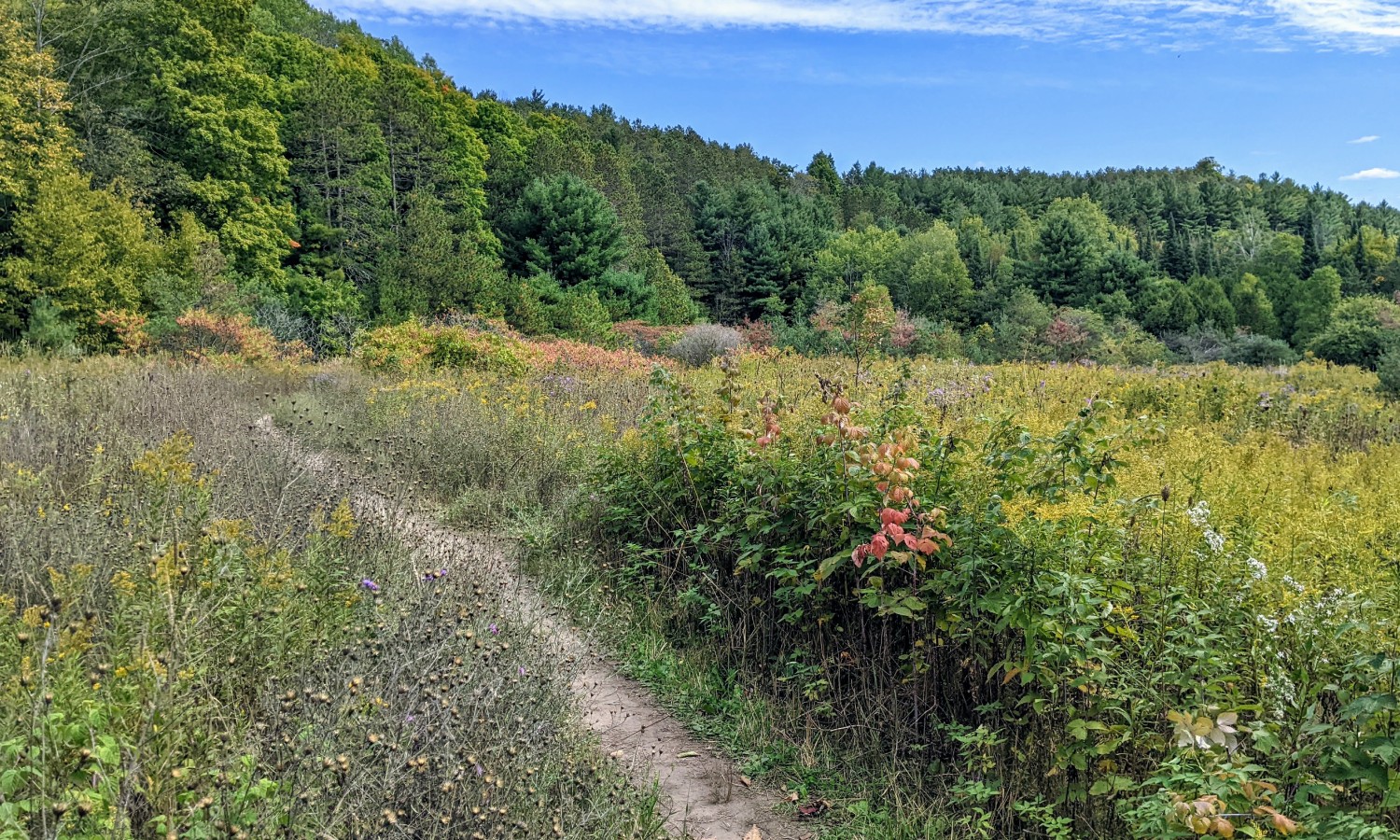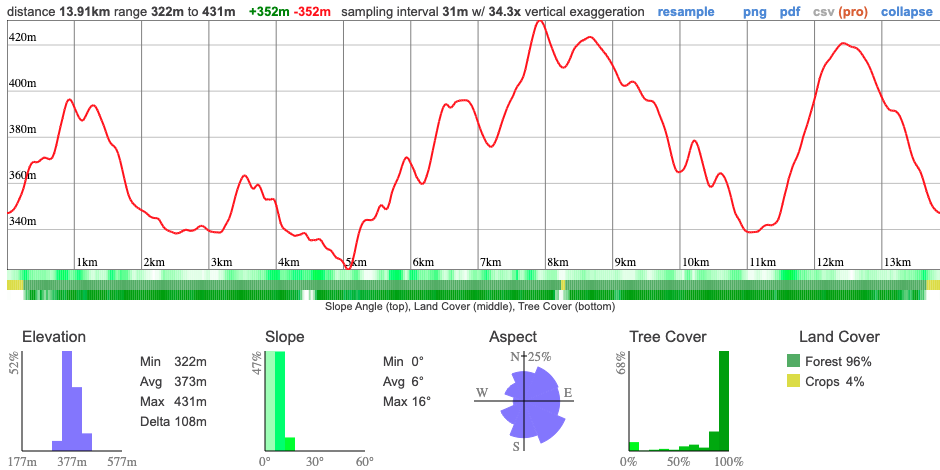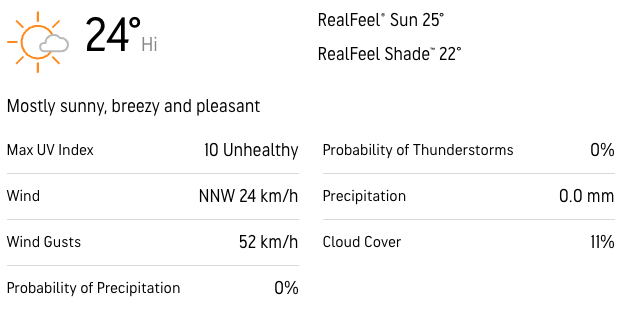
This is a pretty easy hike in a really beautiful spot close to the city. We'll be walking through forests, up and down some cool hills, over bridges and stop for lunch at a scenic spot.
We've got a few distance options depending on how everyone's feeling, from between 10km to 14km in all likelihood. We're going at a pretty leisurely pace of about 2.5km/hr
Hike Length: 10-14km
Terrain: Well trodden paths alongside fields, through the woods, orchards and over some pretty streams. There are a couple of steeper sections that we can take slowly.
Estimated time to complete: 4-5 hours with breaks and exploration time.

08:20: Those taking the van meet at the Petrocanada next to Keele Subway Station. Driving to the shuttle location? There's free parking here.
08:30: Shuttle leaves. Please note that we leave dead on time and can not wait for latecomers.
09:30: Meet self-drivers at parking lot. This map will take you to the precise spot
09:45 - 14:45: Hike, stopping for lunch en route
14:45: Return to Toronto
15:45: Anticipated return to Keele subway station
This custom map is georeferenced, meaning it will show you where you are on the map in the right software and lays out the rough path that we’ll be following. It’s opened with the Avenza app which must be downloaded and installed in advance of the adventure.
You should also download the What3words app - this makes it easy to share and find locations in the unlikely event that you get lost.
Remember to pack a lunch and water
Hiking injuries - Wear appropriate footwear (ankle high hiking boots) and hike within your abilities. If you need extra support, bring hiking poles.
Sunburn/heat stroke/dehydration - Wear sunscreen and a sun hat. Make sure that you hydrate regularly
Hockley falls within the traditional territories of several indigenous peoples, including the Anishinaabe (specifically the Ojibwe and Odawa) and the Haudenosaunee (also known as the Iroquois Confederacy).
Before European colonization, indigenous peoples inhabited the Hockley Valley area and had established thriving communities. They had deep connections to the land, relying on its resources for sustenance, trade, and cultural practices. The valley provided a diverse range of ecosystems, including forests, wetlands, and rivers, which offered ample hunting, fishing, and gathering opportunities.
Indigenous communities in the region had sophisticated social structures, governance systems, and spiritual beliefs. They practiced sustainable land management techniques, such as controlled burns, to maintain the health of the environment and promote the growth of desired plant species. These communities had a profound respect for nature and a close relationship with the land.
With the arrival of European settlers in the 17th and 18th centuries, indigenous peoples' lives and cultures were profoundly disrupted. The impacts of colonization, including forced relocations, the spread of diseases, and the loss of land and resources, significantly affected the indigenous populations of the region.
Today, indigenous peoples continue to maintain their cultural heritage and connections to the land in the Hockley Valley area and beyond. Efforts are being made to preserve indigenous languages, traditional practices, and knowledge systems, as well as to foster understanding and collaboration between indigenous and non-indigenous communities. These initiatives recognize the importance of indigenous history and culture and seek to promote reconciliation and respect for indigenous rights.

This is a pretty easy hike in a really beautiful spot close to the city. We'll be walking through forests, up and down some cool hills, over bridges and stop for lunch at a scenic spot.
We've got a few distance options depending on how everyone's feeling, from between 10km to 14km in all likelihood. We're going at a pretty leisurely pace of about 2.5km/hr
Hike Length: 10-14km
Terrain: Well trodden paths alongside fields, through the woods, orchards and over some pretty streams. There are a couple of steeper sections that we can take slowly.
Estimated time to complete: 4-5 hours with breaks and exploration time.

08:20: Those taking the van meet at the Petrocanada next to Keele Subway Station. Driving to the shuttle location? There's free parking here.
08:30: Shuttle leaves. Please note that we leave dead on time and can not wait for latecomers.
09:30: Meet self-drivers at parking lot. This map will take you to the precise spot
09:45 - 14:45: Hike, stopping for lunch en route
14:45: Return to Toronto
15:45: Anticipated return to Keele subway station
This custom map is georeferenced, meaning it will show you where you are on the map in the right software and lays out the rough path that we’ll be following. It’s opened with the Avenza app which must be downloaded and installed in advance of the adventure.
You should also download the What3words app - this makes it easy to share and find locations in the unlikely event that you get lost.


Remember to pack a lunch and water
Hiking injuries - Wear appropriate footwear (ankle high hiking boots) and hike within your abilities. If you need extra support, bring hiking poles.
Sunburn/heat stroke/dehydration - Wear sunscreen and a sun hat. Make sure that you hydrate regularly
Hockley falls within the traditional territories of several indigenous peoples, including the Anishinaabe (specifically the Ojibwe and Odawa) and the Haudenosaunee (also known as the Iroquois Confederacy).
Before European colonization, indigenous peoples inhabited the Hockley Valley area and had established thriving communities. They had deep connections to the land, relying on its resources for sustenance, trade, and cultural practices. The valley provided a diverse range of ecosystems, including forests, wetlands, and rivers, which offered ample hunting, fishing, and gathering opportunities.
Indigenous communities in the region had sophisticated social structures, governance systems, and spiritual beliefs. They practiced sustainable land management techniques, such as controlled burns, to maintain the health of the environment and promote the growth of desired plant species. These communities had a profound respect for nature and a close relationship with the land.
With the arrival of European settlers in the 17th and 18th centuries, indigenous peoples' lives and cultures were profoundly disrupted. The impacts of colonization, including forced relocations, the spread of diseases, and the loss of land and resources, significantly affected the indigenous populations of the region.
Today, indigenous peoples continue to maintain their cultural heritage and connections to the land in the Hockley Valley area and beyond. Efforts are being made to preserve indigenous languages, traditional practices, and knowledge systems, as well as to foster understanding and collaboration between indigenous and non-indigenous communities. These initiatives recognize the importance of indigenous history and culture and seek to promote reconciliation and respect for indigenous rights.